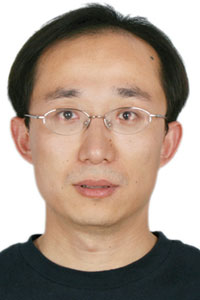Yong He
 National Key Laboratory of Cognitive Neuroscience and Learning, China
National Key Laboratory of Cognitive Neuroscience and Learning, China
http://psychbrain.bnu.edu.cn/teachcms/heyong.htm
What does your research focus on?
Much of my research focuses on the methodology and applications of the human brain connectome by using non-invasive neuroimaging techniques, including structural MRI, diffusion MRI and resting-state fMRI. Specifically, I am interested in (1) exploring the relation between brain structural and functional connectivity and personal behaviors, and (2) studying abnormal connectivity patterns in neurological and psychiatric diseases.
What drew you to this line of research? Why is it exciting to you?
The human brain is the most complex system in the world, but it remains largely unknown how it is structurally and functionally organized. In the past five years, I have been working on the exciting human connectome field because I realized that the combination of modern neuroimaging techniques and graph theory approaches provides a unique opportunity to reveal human brain structural and functional connectivity patterns in health and disease. Specifically, I believe that it would be possible in the future to utilize these exciting research techniques to predict human behaviors and offer imaging-based biomarkers for disease diagnosis and treatment.
Who were/are your mentors or psychological influences?
I have several mentors who have significant influences on my career. Dr. Tianzi Jiang is my PhD supervisor, and I started to be trained as a researcher in his laboratory. With Dr. Yufeng Zang’s great help, I had the opportunity to work in the exciting resting-state fMRI field. As a postdoctoral fellow at Dr. Alan Evans’s laboratory, I mainly focused on the studies of structural brain networks with structural MRI. It is impossible for me to succeed without their help, support, and encouragement.
To what do you attribute your success in the science?
The hard working is the key to my success.
What’s your future research agenda?
My future research mainly focuses on developing network-based imaging biomarkers for disease diagnosis and treatment.
Any advice for even younger psychological scientists? What would you tell someone just now entering graduate school or getting their PhD?
There are many different ways to succeed in science, but young researchers must work hard and stay patient. Also, they need to recognize those real opportunities belonging to them and prepare for taking them.
What publication are you most proud of or feel has been most important to your career?
He, Y., Chen, Z., & Evans, A. (2007). Small-world anatomical networks in the human brain revealed by cortical thickness from MRI. Cerebral Cortex, 17, 2407-2419.
This work was the first to derive a human whole-brain structural network at a macroscopic level by computing the interregional thickness correlations across populations. Moreover, this study showed that the resultant network follows “small-world” organization and contains a set of network hubs predominantly located in heteromodal association cortical regions.





APS regularly opens certain online articles for discussion on our website. Effective February 2021, you must be a logged-in APS member to post comments. By posting a comment, you agree to our Community Guidelines and the display of your profile information, including your name and affiliation. Any opinions, findings, conclusions, or recommendations present in article comments are those of the writers and do not necessarily reflect the views of APS or the article’s author. For more information, please see our Community Guidelines.
Please login with your APS account to comment.